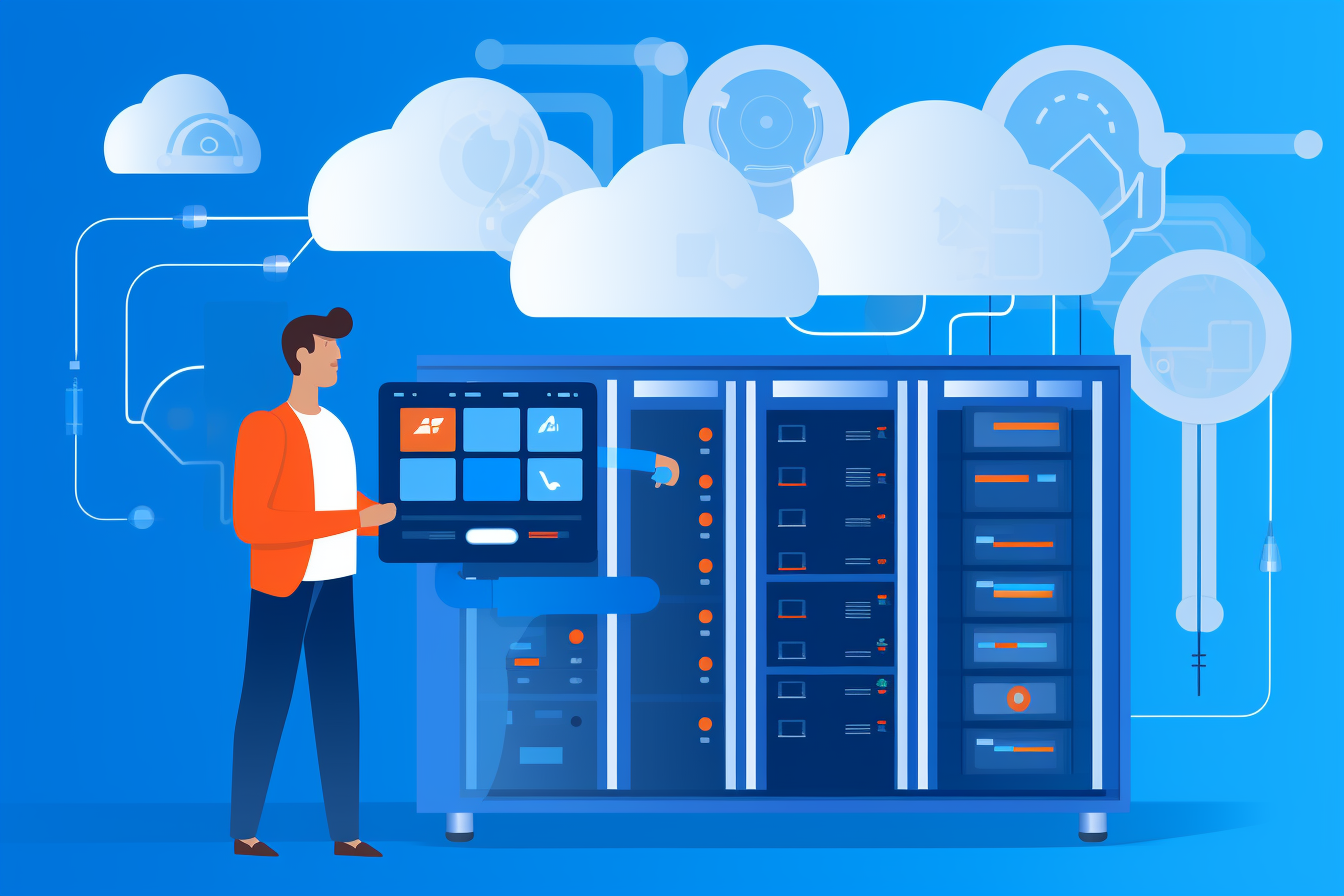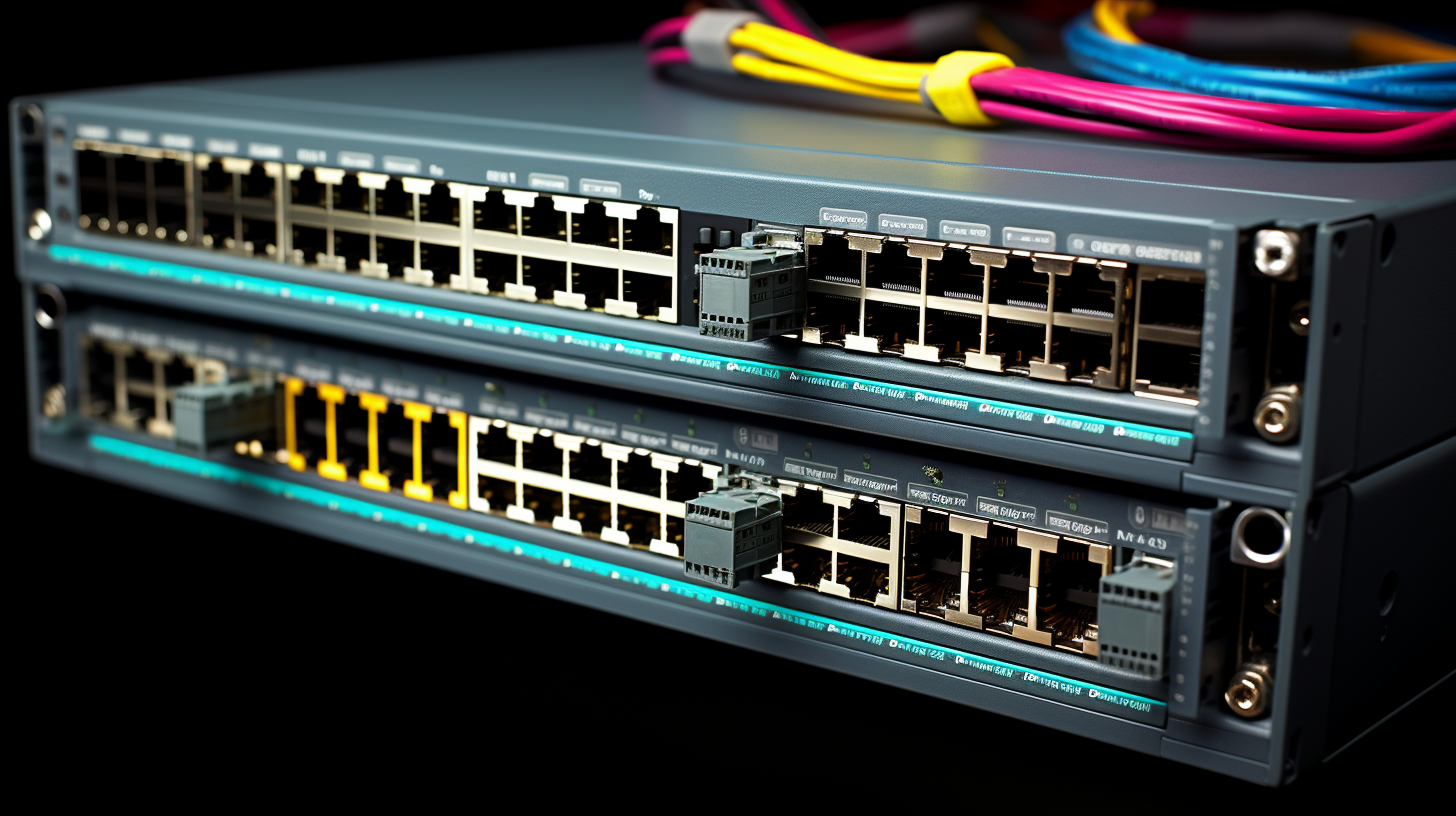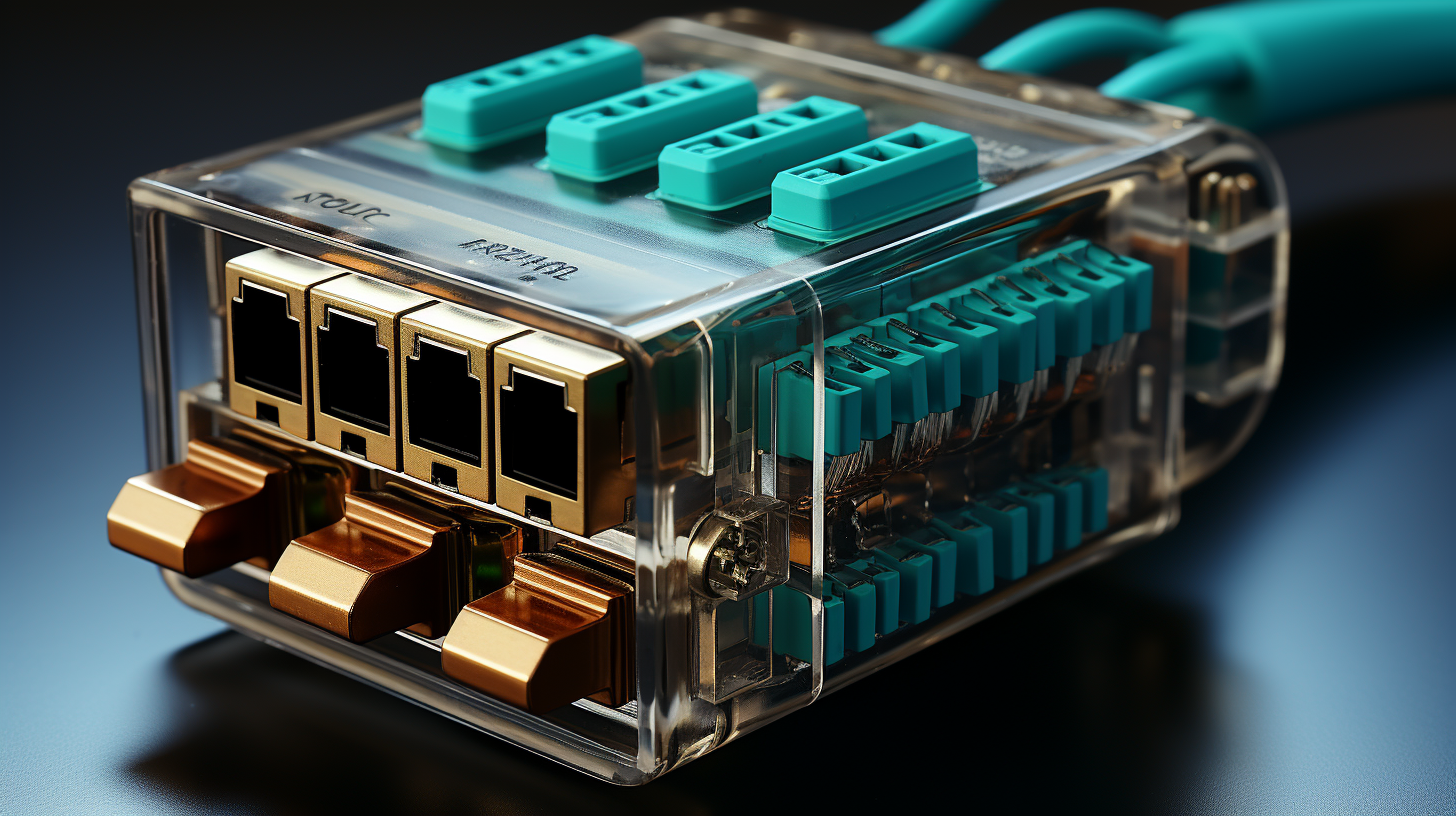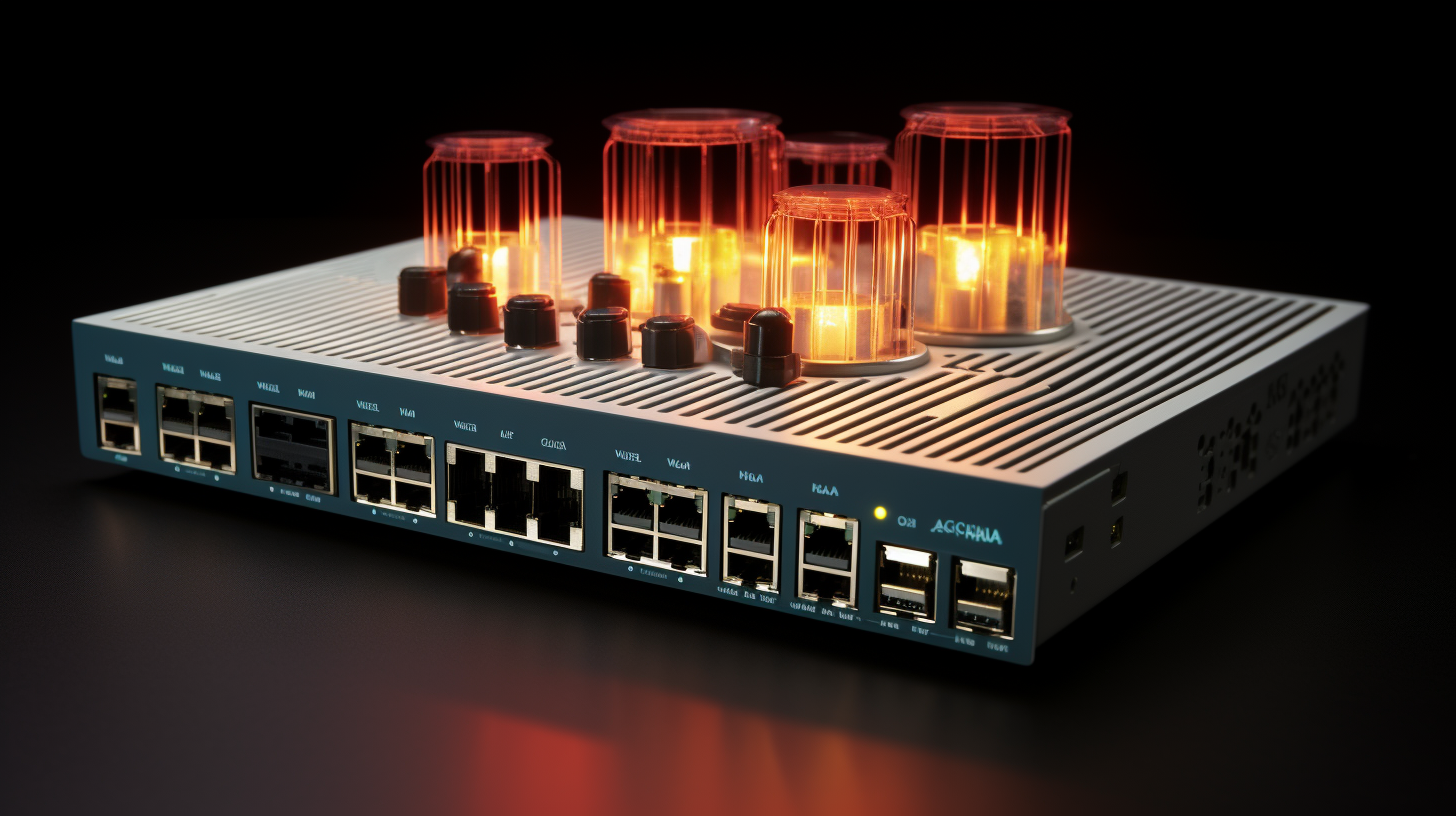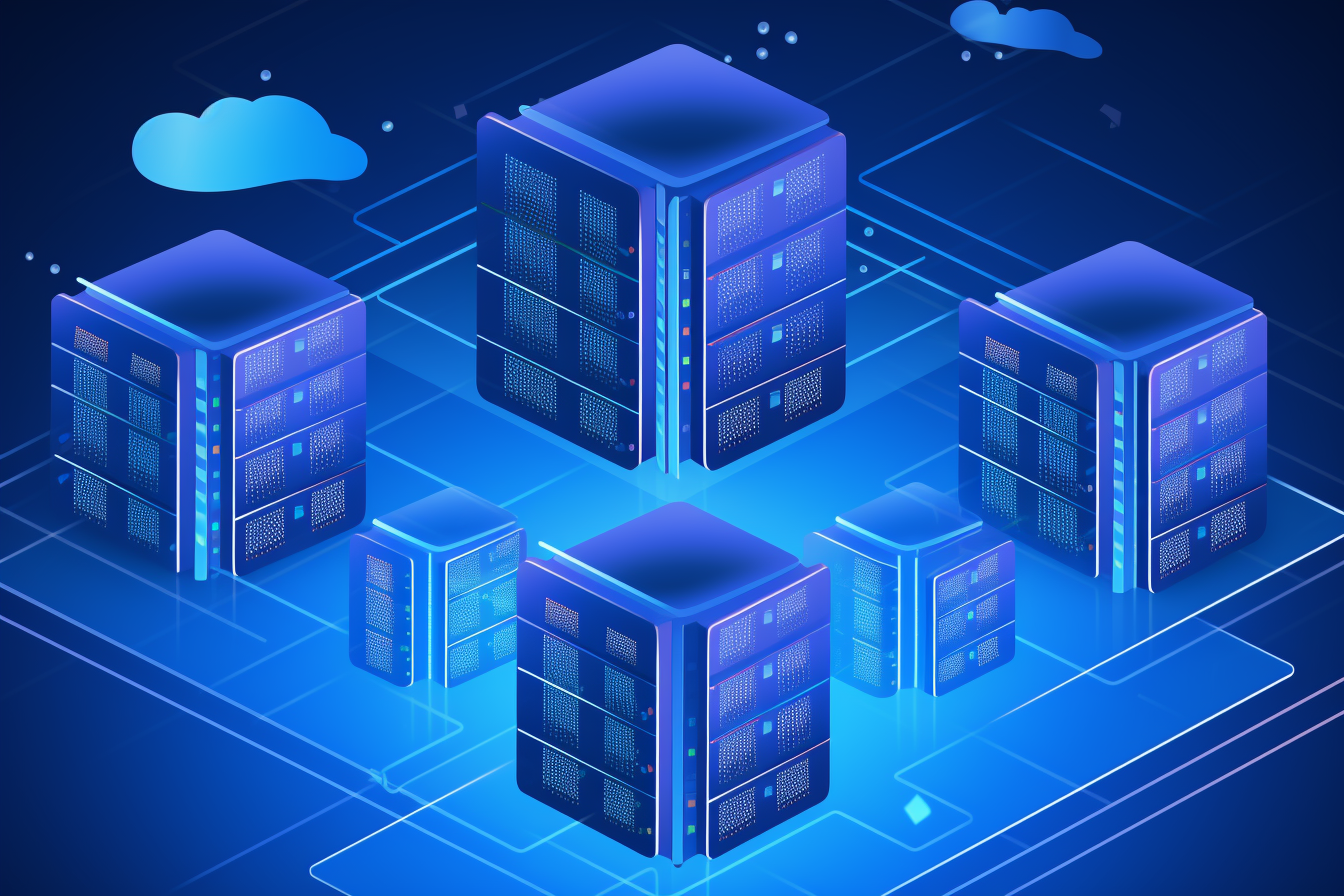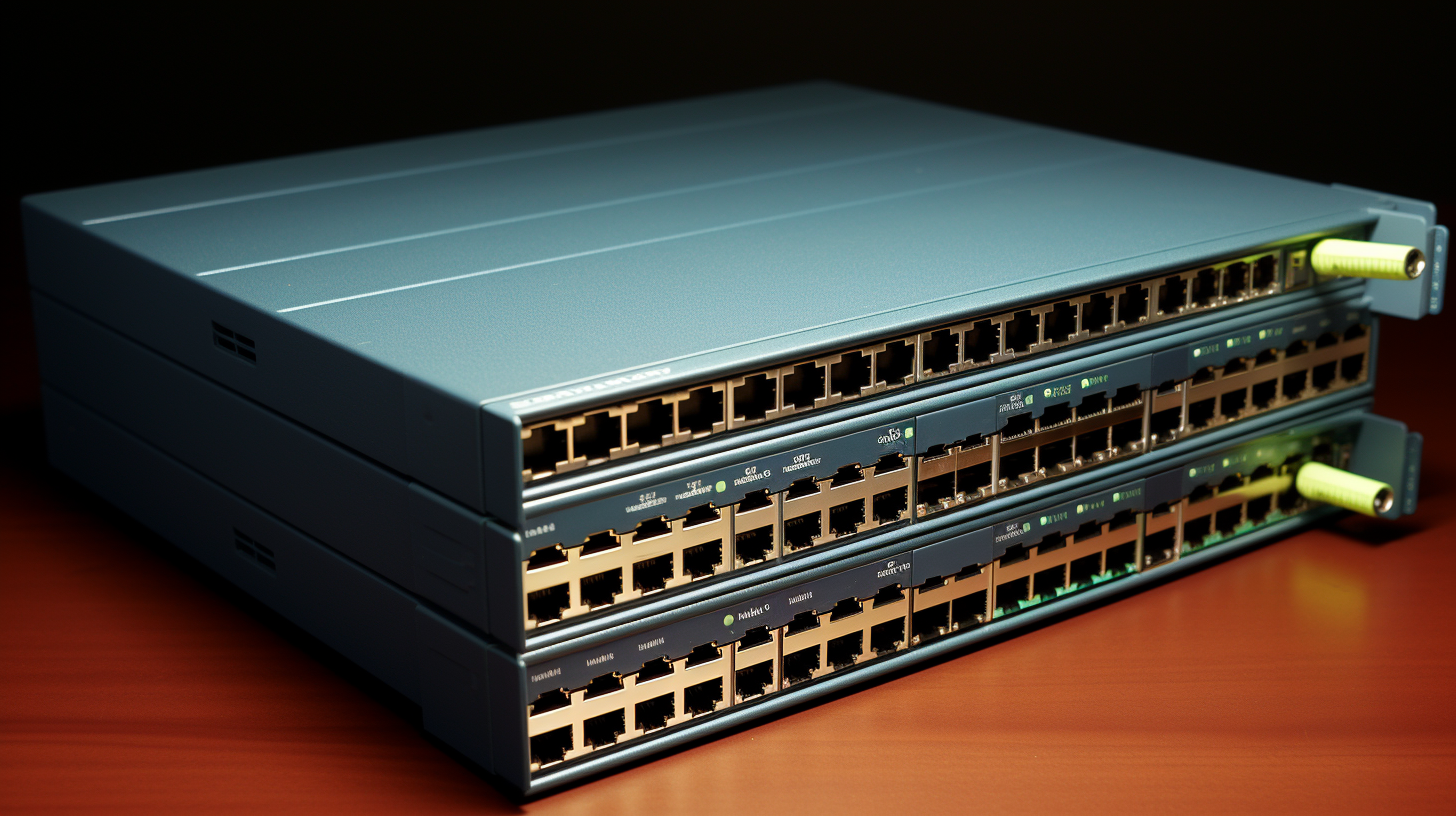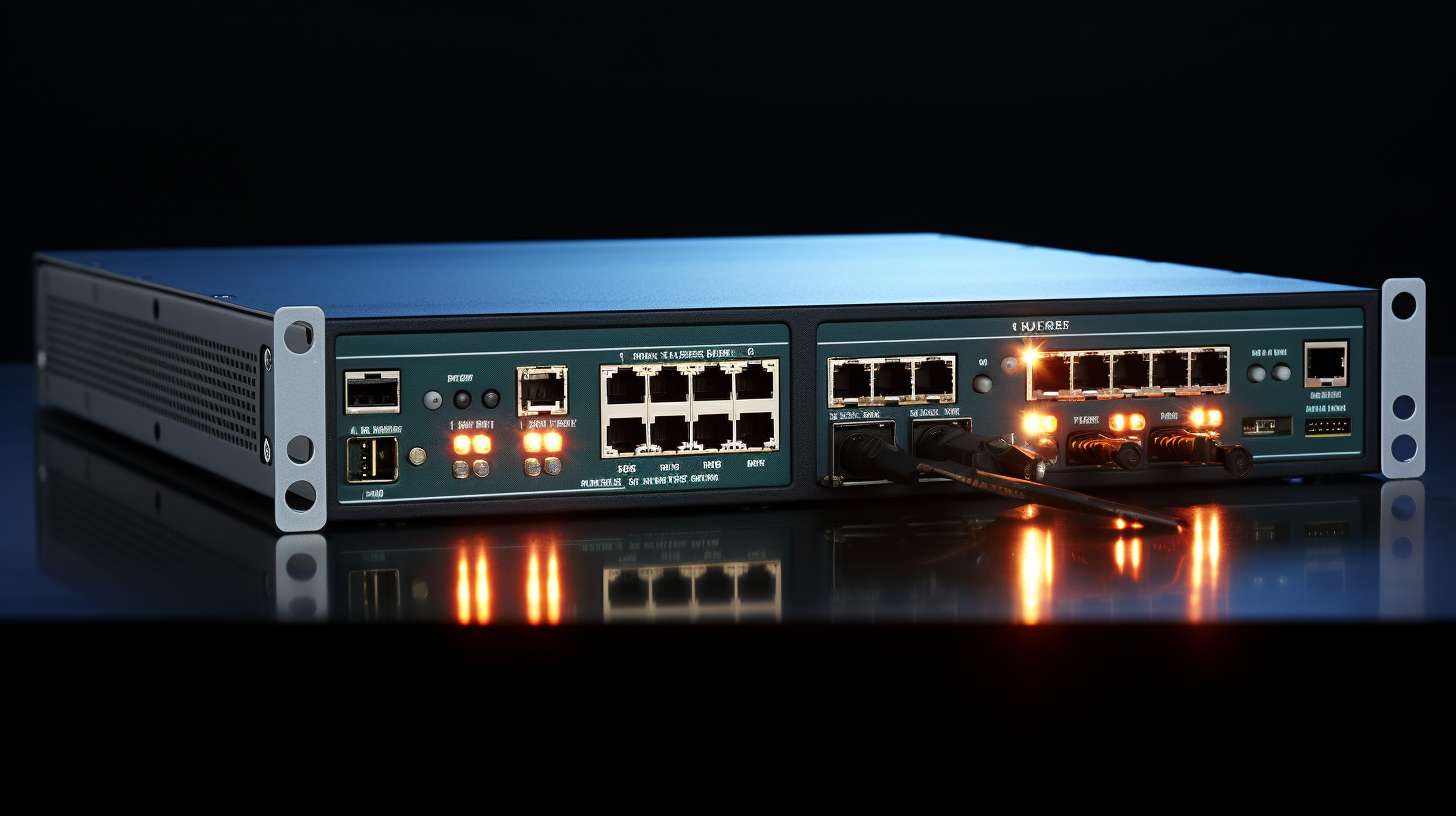-
Step-by-Step Guide: Configuring WLAN with WPA2-PSK Using GUI
Securing your wireless network is of utmost importance to protect sensitive data and prevent unauthorized access. Wi-Fi Protected Access 2 (WPA2) with Pre-Shared Key (PSK) is a widely used and secure authentication method for small to medium-sized networks. In this blog post, we will walk you through the process of configuring a WLAN using WPA2-PSK…
-
Title: Enhancing Wi-Fi Security: A Deep Dive into WPA, WPA2, and WPA3
With the proliferation of wireless networks, securing Wi-Fi connections has become a top priority for organizations and individuals alike. Wi-Fi security protocols play a crucial role in safeguarding wireless communications from unauthorized access and data breaches. In this blog post, we will explore three generations of Wi-Fi security protocols: WPA (Wi-Fi Protected Access), WPA2, and…
-
Demystifying AAA: Authentication, Authorization, and Accounting
In the realm of network security, Authentication, Authorization, and Accounting (AAA) are fundamental concepts that form the backbone of access control and user management. In this blog post, we will delve into each of these concepts, understand their roles, and explore how they work together to ensure a secure and accountable network environment. Authentication: Authentication…
-
Fortifying Network Security with Layer 2 Protection
Network security is a paramount concern for any organization, and implementing robust Layer 2 security features is a crucial step in safeguarding against potential threats. In this blog post, we will explore three essential Layer 2 security features: DHCP snooping, dynamic ARP inspection, and port security. We will discuss how each feature works, their configuration…
-
Mastering Access Control Lists (ACLs) in Network Security
Access Control Lists (ACLs) are essential tools for enhancing network security by controlling traffic flow and filtering packets based on specific criteria. In this blog post, we will explore the concepts of ACLs, understand how they work, and delve into the configuration and verification process to ensure secure network communication. What are Access Control Lists…
-
Understanding IPsec Remote Access and Site-to-Site VPNs
Virtual Private Networks (VPNs) play a crucial role in modern network infrastructures, enabling secure communication over public networks such as the internet. IPsec (Internet Protocol Security) is a widely used protocol suite for implementing VPNs. In this blog post, we will explore IPsec-based remote access and site-to-site VPNs, their key components, and how they provide…
-
Implementing Effective Security Password Policies in Network Environments
Securing access to network devices is of utmost importance to protect against unauthorized access and potential security breaches. Passwords are a critical component of network security, and implementing robust password policies is essential to enhance overall security posture. In this blog post, we will delve into the key elements of security password policies, including password…
-
Configuring User Authentication and Secure VTY Line Access on Cisco Devices
Network security is paramount in today’s interconnected world, and protecting access to Cisco devices is a critical aspect of maintaining a secure network infrastructure. In this blog post, we will walk through the process of configuring users and passwords on a Cisco device, as well as securing access to VTY lines by requiring both a…
-
Building a Robust Security Program: Key Elements for Network Protection
In today’s rapidly evolving digital landscape, establishing a strong security program is crucial to safeguarding sensitive data and ensuring the integrity of network communication. A well-rounded security program comprises several essential elements, including user awareness, training, and physical access control. In this blog post, we will delve into each of these elements, exploring their significance…
-
Strengthening Network Security: Understanding Threats, Vulnerabilities, Exploits, and Mitigation Techniques
In today’s interconnected world, network security is of paramount importance to protect sensitive data and maintain the integrity of communication. Understanding key security concepts such as threats, vulnerabilities, exploits, and mitigation techniques is essential for network administrators and engineers. In this blog post, we will delve into these concepts and explore how they play a…
-
File Transfer Made Easy: TFTP and FTP in the Network
File Transfer Protocol (FTP) and Trivial File Transfer Protocol (TFTP) are essential networking protocols used for transferring files between devices in a network. They serve as efficient and reliable means to upload and download files, configurations, and firmware to network devices. In this blog post, we will explore the capabilities and functions of TFTP and…
-
Ensuring Quality of Service with Per-Hop Behavior (PHB)
Quality of Service (QoS) is a critical aspect of modern networking that ensures efficient and reliable data transmission across the network. Per-Hop Behavior (PHB) plays a key role in QoS implementation by defining the forwarding behavior of network devices for different types of traffic. In this blog post, we will explore the essential components of…
-
Secure Remote Access with SSH: Configuring Network Devices
Secure Shell (SSH) is a cryptographic network protocol used for secure remote access to network devices. It provides a secure channel over an unsecured network, ensuring confidentiality and integrity of data transmitted between the client and the network device. In this blog post, we will explore the steps to configure network devices for remote access…
-
Effortless Network Configuration with DHCP Client and Relay
Dynamic Host Configuration Protocol (DHCP) plays a vital role in simplifying network configuration by automatically assigning IP addresses and other network parameters to devices. In this blog post, we will explore the process of configuring and verifying DHCP client and relay functionality on Cisco routers. By understanding DHCP client operation and configuring DHCP relay agents,…
-
Harnessing Syslog Features for Efficient Network Management
In the realm of network management and troubleshooting, syslog stands as a vital component for capturing and storing critical system messages from various network devices. Syslog offers a standardized method for logging events, warnings, and errors, which proves invaluable in maintaining network health and security. In this blog post, we will explore the use of…
-
Unlocking the Power of SNMP in Network Operations
In the world of network management and monitoring, the Simple Network Management Protocol (SNMP) plays a crucial role. SNMP is a widely used protocol that enables network administrators to gather valuable information, manage network devices, and monitor network performance. In this blog post, we will explore the function of SNMP, its key components, and how…
-
DHCP and DNS: Pillars of Network Connectivity
Dynamic Host Configuration Protocol (DHCP) and Domain Name System (DNS) are two crucial network services that play vital roles in simplifying and enhancing network connectivity. DHCP automates the assignment of IP addresses to devices, while DNS translates human-readable domain names into IP addresses. Together, these protocols ensure seamless communication and efficient data exchange across the…
-
Mastering Time Synchronization: NTP Configuration and Stratum Values
Time synchronization is a critical aspect of networking, ensuring that all devices within a network have consistent and accurate timekeeping. In this blog post, we will explore the Network Time Protocol (NTP) and how it operates in both client and server modes. We will delve into NTP configuration, the significance of stratum values, and how…
-
Configuring and Verifying Inside Source NAT using Static and Pools
Network Address Translation (NAT) is a fundamental technique used in networking to conserve IP address space and enable communication between private networks and the public internet. Inside Source NAT, also known as NAT overload or Port Address Translation (PAT), allows multiple internal private IP addresses to share a single public IP address when accessing the…
-
Understanding First Hop Redundancy Protocols: HSRP, VRRP, and GLBP
In modern network environments, high availability and fault tolerance are critical factors to ensure uninterrupted connectivity. First Hop Redundancy Protocols (FHRPs) play a crucial role in achieving these objectives by providing redundancy for the default gateway, which is the first hop a host takes when sending packets outside its local network. In this blog post,…
-
Configuring and Verifying Single Area OSPFv2
Open Shortest Path First version 2 (OSPFv2) is a widely-used routing protocol that efficiently routes IP packets within a single autonomous system. OSPFv2 uses link-state advertisements (LSAs) to build a topology map of the network, allowing routers to calculate the shortest path to a destination. In this blog post, we will explore how to configure…
-
Configuring and Verifying IPv4 and IPv6 Static Routing
Static routing is an essential aspect of network configuration, allowing administrators to manually define specific routes for data packets to traverse between networks. Unlike dynamic routing, where routers exchange routing information, static routes are manually configured and do not change automatically. In this blog post, we will explore how to configure and verify IPv4 and…
-
Making Forwarding Decisions: Understanding Router Behavior
Routers are the backbone of network communication, and understanding how they make forwarding decisions is fundamental for network administrators. By default, routers employ specific mechanisms to determine the most appropriate path for data packets to reach their destinations efficiently. In this blog post, we will explore the default methods routers use to make forwarding decisions:…
-
Understanding Routing Tables: A Comprehensive Guide
Routing tables play a crucial role in network communication, determining the most efficient paths for data packets to reach their intended destinations. As a network administrator, comprehending the components of a routing table is essential for designing and managing robust and reliable networks. In this blog post, we will delve into the key components of…
-
Harnessing Azure Monitor: Gain Real-time Insights and Optimize Your Azure Environment
In the dynamic world of Azure cloud computing, organizations seek efficient ways to monitor and optimize their Azure resources. Azure Monitor offers a comprehensive set of monitoring and diagnostic tools that enable organizations to gain real-time insights, detect and resolve issues proactively, and optimize their Azure deployments. In this blog post, we will explore the…
-
Configuring Wireless LAN Access for Client Connectivity using GUI
In modern networking, Wireless Local Area Networks (WLANs) have become an integral part of our daily lives, providing seamless connectivity and flexibility for users. Configuring WLAN access for client connectivity involves several essential components, ranging from WLAN creation and security settings to Quality of Service (QoS) profiles and advanced WLAN settings. In this blog post,…
-
Ensuring Continuity with Azure Service Health: Your Window into Azure Service Status
In today’s highly interconnected digital landscape, organizations rely on uninterrupted access to cloud services for their critical operations. Azure Service Health serves as a vital resource, providing real-time insights and updates about Azure service status, planned maintenance, and incidents. In this blog post, we will explore the purpose of Azure Service Health, its key features,…
-
Managing Access Points (APs) and Wireless LAN Controllers (WLCs)
In modern Wireless Local Area Networks (WLANs), effective management of Access Points (APs) and Wireless LAN Controllers (WLCs) is essential to ensure seamless connectivity and security. Various management access connections provide administrators with the means to configure, monitor, and troubleshoot these devices. In this blog post, we will explore the different management access methods for…
-
Unleashing the Power of Azure Advisor: Maximizing Your Azure Deployments
In the fast-paced world of Azure cloud computing, organizations are constantly seeking ways to optimize their Azure deployments, enhance performance, fortify security, and streamline costs. Azure Advisor is an invaluable companion in this endeavor, offering tailored recommendations and best practices to unlock the full potential of your Azure environment. In this blog post, we will…
-
Exploring Physical Infrastructure Connections of WLAN Components
Wireless Local Area Networks (WLANs) have become an integral part of modern networking infrastructures, providing seamless connectivity and mobility to users. To ensure the smooth operation of WLAN components, it’s essential to understand the physical infrastructure connections that interconnect these components. In this blog post, we will delve into the key aspects of physical connections…
-
Exploring Cisco Wireless Architectures and AP Modes
In today’s interconnected world, wireless networks play a crucial role in providing seamless connectivity and mobility. Cisco, a leading networking solutions provider, offers a range of wireless architectures and Access Point (AP) modes to meet diverse business needs. In this blog post, we will delve into the key features of Cisco Wireless Architectures and explore…
-
Simplify Azure Resource Management: Exploring Azure Resource Manager (ARM) and ARM Templates
Azure Resource Manager (ARM) is a powerful management layer in Azure that enables organizations to deploy, manage, and organize Azure resources efficiently. At the core of ARM’s capabilities are ARM templates, which provide a declarative and repeatable approach for defining and deploying Azure resources. In this blog post, we will delve into the purpose of…
-
Empowering Cloud Deployments: Unveiling the Power of Infrastructure as Code (IaC) in Azure
In the realm of cloud computing, Infrastructure as Code (IaC) has emerged as a transformative practice that enables organizations to provision, manage, and scale their infrastructure using code-based configurations. Azure provides robust tools and services that facilitate the implementation of IaC, streamlining the deployment and management of resources. In this blog post, we will explore…
-
Unleashing the Power of Rapid PVST+ Spanning Tree Protocol
In the world of computer networking, bridging loops pose a significant threat to network performance and stability. To address this challenge, the Rapid Per VLAN Spanning Tree Plus (Rapid PVST+) protocol emerges as a powerful solution, offering a swift and efficient method to maintain loop-free networks. In this blog post, we will delve into the…
-
Exploring the Power of EtherChannel with LACP
In the vast landscape of modern networking, EtherChannel with Link Aggregation Control Protocol (LACP) stands as a prominent technique, designed to optimize link utilization and enhance network resilience. This advanced feature allows network administrators to bundle multiple physical interfaces into a single logical link, providing increased bandwidth and redundancy. In this blog post, we will…
-
Unleashing Hybrid Cloud Potential: Understanding the Purpose of Azure Arc
As organizations embrace the benefits of the cloud, they often find themselves in a hybrid environment, with resources spread across on-premises, multi-cloud, and edge locations. Azure Arc provides a powerful solution for managing and orchestrating resources beyond Azure’s boundaries. With Azure Arc, organizations can extend Azure services, governance, and management capabilities to any infrastructure, regardless…
-
Unveiling Layer 2 Discovery Protocols: Cisco Discovery Protocol and LLDP
Layer 2 discovery protocols play a crucial role in modern networking, enabling devices to automatically discover and gather information about neighboring devices on the same network segment. In this blog post, we will delve into two significant Layer 2 discovery protocols: Cisco Discovery Protocol (CDP) and Link Layer Discovery Protocol (LLDP). Understanding these protocols is…
-
Empower Your Azure Management: Unleashing the Power of Azure Cloud Shell with Azure CLI and PowerShell
In the ever-evolving world of Azure cloud computing, efficient and streamlined management is key to success. Azure Cloud Shell provides a powerful and interactive environment that allows users to manage their Azure resources directly from a browser. With built-in Azure Command-Line Interface (CLI) and Azure PowerShell, Azure Cloud Shell offers a flexible and convenient experience…
-
Mastering Interswitch Connectivity: Trunk Ports, 802.1Q, and Native VLANs
Interswitch connectivity is a vital aspect of modern networking, enabling seamless communication between switches and expanding network capabilities. In this blog post, we will explore essential concepts related to configuring and verifying interswitch connectivity, including trunk ports, the 802.1Q protocol, and the role of the native VLAN. Understanding these topics is crucial for network administrators…
-
Navigating the Azure Portal: A Gateway to Azure’s Power and Potential
Aspiring Azure professionals embarking on their cloud journey must familiarize themselves with the Azure Portal, the central hub for managing and interacting with Azure resources. The Azure Portal offers a rich and intuitive user interface that enables users to deploy, monitor, and manage their Azure services effectively. In this blog post, we will explore the…
-
Mastering VLANs and InterVLAN Connectivity for Efficient Network Segmentation
Virtual LANs (VLANs) are a key component in modern networking, enabling efficient network segmentation, enhanced security, and optimized traffic management. In this blog post, we will delve into the realm of VLANs, focusing on configuring and verifying VLANs spanning multiple switches, access ports for data and voice, and achieving InterVLAN connectivity. By mastering these concepts,…
-
Ensuring Stability and Protection: Understanding the Purpose of Resource Locks in Azure
In the dynamic and collaborative environment of Azure, it is essential to ensure stability and protect critical resources from unintended modifications or deletions. Azure provides a powerful feature called resource locks, which enable organizations to prevent accidental or unauthorized changes to their Azure resources. In this blog post, we will explore the purpose of resource…
-
Demystifying Switching Concepts: MAC Learning and Aging, Frame Switching, Frame Flooding, and MAC Address Table
Switching is a fundamental networking concept that plays a crucial role in connecting devices within a local area network (LAN). It involves the process of receiving, processing, and forwarding data frames between network devices. In this blog post, we will explore essential switching concepts, including MAC learning and aging, frame switching, frame flooding, and the…
-
Ensuring Governance and Compliance: Exploring the Purpose of Azure Policy
In the rapidly evolving cloud landscape, organizations face the challenge of maintaining governance, compliance, and security across their Azure environments. Azure Policy provides a powerful framework for defining and enforcing governance rules to ensure the adherence of resources to organizational standards and regulatory requirements. In this blog post, we will delve into the purpose of…
-
Understanding Virtualization Fundamentals: Server Virtualization, Containers, and VRFs
Virtualization has revolutionized the world of IT by allowing efficient utilization of resources, increased flexibility, and simplified management. In this blog post, we will explore the core concepts of virtualization, focusing on three essential aspects: server virtualization, containers, and VRFs (Virtual Routing and Forwarding). By understanding these virtualization fundamentals, network administrators and IT professionals can…
-
Unlocking Data Insights: Exploring the Power of Microsoft Purview in Azure
In today’s data-driven world, organizations face the challenge of managing and deriving value from vast amounts of data dispersed across various sources. Microsoft Purview, a powerful data governance solution in Azure, helps organizations discover, understand, and govern their data assets. In this blog post, we will explore the purpose of Microsoft Purview in Azure, its…
-
Understanding IPv6 Address Types: Unicast, Anycast, Multicast, and Modified EUI 64
As the internet evolves and embraces the vast address space provided by IPv6, it introduces various address types to meet the diverse needs of modern networking. IPv6 addresses are structured in a way that facilitates efficient data communication and enables different communication models. In this blog post, we will explore the different IPv6 address types,…
-
Organizing and Managing Azure Resources: Unlocking the Power of Tags
In the dynamic world of Azure cloud computing, effectively organizing and managing resources is crucial for efficient operations and cost control. Azure provides a powerful feature called tags, which allows organizations to categorize and label resources with customizable metadata. In this blog post, we will explore the purpose of tags in Azure, their benefits, and…
-
Understanding Wireless Principles: Nonoverlapping Wi-Fi Channels, SSID, RF, and Encryption
In today’s interconnected world, wireless networks have become an integral part of our daily lives. Understanding the fundamental principles that govern wireless communication is essential for designing, implementing, and securing robust wireless networks. In this blog post, we will explore key wireless principles, including nonoverlapping Wi-Fi channels, SSID, RF (Radio Frequency), and encryption methods, to…
-
Mastering Cost Management: Maximizing Efficiency with Azure’s Cost Management Capabilities
As organizations embrace the cloud, effectively managing costs becomes a crucial aspect of their Azure journey. Azure provides robust cost management capabilities that empower organizations to monitor, optimize, and control their spending. In this blog post, we will explore Azure’s cost management capabilities, including cost tracking, budgeting, optimization tools, and reporting features. Understanding these capabilities…
-
Verifying IP Parameters for Client Operating Systems (Windows, Mac OS, Linux)
As networks continue to expand and become more complex, ensuring accurate and efficient IP parameter configurations on client operating systems is essential. The three primary client operating systems – Windows, Mac OS, and Linux – all require specific settings to establish successful network connections. In this blog post, we will explore the steps to verify…
-
Choosing the Right Azure Cost Estimation Tool: Azure Pricing Calculator vs. TCO Calculator
As organizations plan their cloud migration or expansion strategies, understanding the potential costs associated with Azure services becomes essential. Microsoft offers two valuable tools for estimating costs: the Azure Pricing Calculator and the Total Cost of Ownership (TCO) Calculator. In this blog post, we will compare these tools, explore their features, and help you determine…
-
Emphasizing the Importance of Private IPv4 Addressing in Modern Networks
In the digital age, where connectivity and data sharing are paramount, the demand for IP addresses has surged exponentially. As the world rapidly runs out of available public IPv4 addresses, the adoption of private IPv4 addressing has become crucial for addressing the scarcity issue. In this blog post, we will explore the need for private…
-
Understanding Azure Cost Factors: Optimizing Your Azure Investment
As organizations embrace the power of Azure for their cloud infrastructure and services, it becomes essential to manage and optimize costs effectively. Azure offers a range of services and resources with varying cost structures, making it crucial to understand the factors that can impact costs. In this blog post, we will explore the key factors…
-
Mastering IPv6 Addressing and Subnetting: A Comprehensive Guide
In the world of networking, IPv6 addressing and subnetting are the foundational building blocks for establishing seamless data communication across devices and networks. IPv6, the successor to IPv4, offers an abundant address space and improved functionalities, making it an essential protocol for the future of the internet. In this in-depth blog post, we will explore…
-
Strengthening Cloud Security with Microsoft Defender for Cloud
As organizations increasingly migrate their workloads to the cloud, protecting critical assets and defending against sophisticated threats becomes paramount. Microsoft Defender for Cloud (formerly Azure Defender) is a comprehensive security solution that helps organizations fortify their cloud environments. In this blog post, we will explore the purpose of Microsoft Defender for Cloud, its key features,…
-
Demystifying IPv4 Addressing and Subnetting: A Comprehensive Guide
In the world of networking, IPv4 addressing and subnetting are the foundational building blocks for establishing seamless data communication across devices and networks. Mastering IPv4 addressing and subnetting is an indispensable skill for networking professionals, enabling them to design efficient and scalable network infrastructures. In this in-depth blog post, we will explore the intricacies of…
-
Strengthening Security with Defense-in-Depth in Azure: Protecting Your Digital Assets
In today’s digital landscape, organizations face an ever-evolving array of sophisticated cyber threats. To ensure robust protection of sensitive data and resources, a comprehensive security strategy is essential. Azure offers a defense-in-depth approach, a layered security model that fortifies the Azure ecosystem against diverse threats. In this blog post, we will explore the purpose of…
-
Decoding Network Protocols: A Comparison of TCP and UDP
In the realm of networking, data communication relies on various protocols to ensure the seamless exchange of information. Two fundamental protocols that play a crucial role in data transmission are TCP (Transmission Control Protocol) and UDP (User Datagram Protocol). Understanding the differences between TCP and UDP is essential for networking professionals. In this blog post,…
-
Embracing Zero Trust in Azure: Reinforcing Security in a Dynamic World
As the threat landscape evolves and the perimeter-based security approach becomes less effective, a paradigm shift towards a Zero Trust security model is gaining traction. Azure provides a comprehensive set of capabilities to implement the Zero Trust framework, enabling organizations to strengthen their security posture and protect critical assets. In this blog post, we will…
-
Troubleshooting Network Interface and Cable Issues: Unveiling the Hidden Culprits
In the realm of networking, maintaining seamless data communication is crucial for smooth operations and productivity. However, network interface and cable issues can pose challenges, leading to disruptions in data flow. Identifying and resolving interface and cable problems is an essential skill for networking professionals. In this blog post, we will explore common interface and…
-
Simplifying Access Management with Azure Role-Based Access Control (RBAC)
In complex cloud environments, managing access to resources and ensuring proper permissions can be a challenging task. Azure provides a robust access management framework called Role-Based Access Control (RBAC) to simplify the process of granting permissions and enforcing security in Azure services. In this blog post, we will explore Azure RBAC, its key components, benefits,…
-
Exploring Ethernet Connections: Shared Media and Point-to-Point Networking
In the realm of networking, Ethernet connections serve as the backbone of data communication, providing efficient data transfer between devices. Understanding the two primary types of Ethernet connections – shared media and point-to-point – is crucial for networking professionals. In this blog post, we will explore the key characteristics of these Ethernet connections, their significance…
-
Strengthening Security with Conditional Access in Azure Active Directory
In today’s rapidly evolving threat landscape, securing access to resources and protecting sensitive data is of paramount importance. Azure Active Directory (Azure AD) offers a powerful feature called Conditional Access, which enables organizations to enforce fine-grained access controls based on various conditions. In this blog post, we will explore Conditional Access in Azure AD, its…
-
Demystifying Copper Cabling Standards: The Backbone of Wired Networking
In the world of wired networking, copper cabling stands as the foundation for reliable and efficient data transmission. With its widespread usage in local area networks (LANs) and other network infrastructures, understanding copper cabling standards is essential for networking professionals. In this blog post, we will delve into the key copper cabling standards, their significance…
-
Simplifying External Identity Management in Azure: Exploring B2B and B2C Identities
In today’s interconnected world, businesses often need to extend access to their resources to external users, including partners, customers, and vendors. Azure provides robust identity management capabilities to streamline the process of managing external identities. In this blog post, we will explore external identities in Azure, focusing on Business-to-Business (B2B) and Business-to-Customer (B2C) scenarios. Understanding…
-
Unlocking the Potential of Multimode Fiber: Enabling High-Speed Data Communication
In the dynamic world of networking, Multimode Fiber (MMF) emerges as a versatile and reliable medium for high-speed data transmission. With its unique core design and cost-effective attributes, MMF plays a crucial role in connecting devices within local area networks (LANs) and data centers. In this blog post, we will delve into the key characteristics…
-
Streamlining Authentication in Azure: Exploring Single Sign-On, Multi-Factor Authentication, and Passwordless Options
Authentication is a fundamental aspect of securing access to resources in the cloud. Azure offers a range of authentication methods to provide a secure and streamlined user experience. In this blog post, we will explore authentication methods in Azure, including Single Sign-On (SSO), Multi-Factor Authentication (MFA), and Passwordless authentication. Understanding these methods will help businesses…
-
Harnessing the Power of Single Mode Fiber: Unleashing High-Performance Data Transmission
In the realm of networking, Single Mode Fiber (SMF) stands as a dominant force in high-performance data transmission. With its unique design and capabilities, SMF enables efficient and reliable long-distance communication in various networking environments. In this blog post, we will explore the key characteristics of Single Mode Fiber, its significance in data communication, and…
-
Simplifying Identity and Access Management with Azure Directory Services
In today’s cloud-driven world, effective identity and access management is crucial for businesses to secure their resources and enable seamless user experiences. Azure provides a suite of directory services to simplify identity management, including Azure Active Directory (Azure AD) and Azure Active Directory Domain Services (Azure AD DS). In this blog post, we will explore…
-
Unveiling Network Connectivity: Comparing Physical Interface and Cabling Types
In the dynamic world of networking, selecting the right physical interface and cabling types plays a pivotal role in ensuring efficient data communication and connectivity. Understanding the nuances of various interface and cabling options empowers networking professionals to design robust network infrastructures. In this blog post, we will compare the key characteristics of single-mode fiber,…
-
Simplifying Data Migration: Exploring Azure Migrate and Azure Data Box
As organizations embrace the cloud, the need to migrate data and workloads efficiently becomes paramount. Microsoft Azure offers a variety of migration options to streamline the process of moving data to the cloud. In this blog post, we will explore two popular migration options: Azure Migrate and Azure Data Box. By understanding the features, benefits,…
-
Unveiling the Pros and Cons: On-Premises vs. Cloud Network Topologies
The realm of networking offers two distinct approaches to building network infrastructures: On-Premises and Cloud-based topologies. Each approach brings its set of advantages and challenges, shaping the way organizations design and manage their network environments. In this blog post, we will explore the key characteristics of On-Premises and Cloud network topologies, their significance in networking…
-
Seamlessly Moving Files in Azure: Exploring AzCopy, Azure Storage Explorer, and Azure File Sync
As organizations embrace the cloud, the need to efficiently move files and data between different storage solutions becomes crucial. Microsoft Azure provides a variety of tools and services to facilitate seamless file migration and management. In this blog post, we will explore popular options for moving files in Azure, including AzCopy, Azure Storage Explorer, and…
-
Optimizing Connectivity: Unveiling Small Office/Home Office Network Topologies
In the world of networking, Small Office/Home Office (SOHO) network topologies have emerged as versatile solutions tailored to the specific needs of smaller organizations and home-based setups. Understanding the intricacies of SOHO network topologies is crucial for anyone pursuing a career in networking. In this blog post, we will explore the key characteristics of SOHO…
-
Navigating Azure Storage Account Options and Storage Types: Choosing the Right Fit for Your Data
Azure Storage is a comprehensive storage solution offered by Microsoft Azure, providing a scalable and durable platform to store and manage data. Within Azure Storage, there are different storage account options and storage types available, each designed to cater to specific data storage needs. In this blog post, we will delve into Azure storage account…
-
Embracing Connectivity: Unraveling the Wonders of WAN Network Topologies
In the realm of networking, Wide Area Network (WAN) topologies have emerged as critical components in shaping seamless data communication over vast geographical distances. Understanding the intricacies of WAN network topologies is essential for anyone pursuing a career in networking. In this blog post, we will explore the key characteristics of WAN topologies, their significance…
-
Elevating Network Performance with Spine and Leaf Topologies
In the ever-evolving landscape of networking, Spine and Leaf topologies have emerged as innovative designs that revolutionize data center and large-scale network architectures. Understanding the ins and outs of these modern topologies is crucial for anyone pursuing a career in networking. In this blog post, we will explore the key characteristics of Spine and Leaf…
-
Demystifying Azure Redundancy Options: Ensuring High Availability and Data Durability
High availability and data durability are essential considerations when architecting a robust cloud infrastructure. Azure offers a variety of redundancy options, including Availability Zones, Availability Sets, Geo-Redundant Storage (GRS), Locally Redundant Storage (LRS), Zone-Redundant Storage (ZRS), and more. In this blog post, we will explore Azure redundancy options in-depth, providing insights into their features, benefits,…
-
Unraveling the Efficiency of Three-Tier Network Topologies: Elevating Scalability and Fault Tolerance
In the realm of networking, Three-tier network topologies have emerged as a versatile design that optimizes network infrastructure for medium to large-scale enterprises. Understanding the ins and outs of Three-tier networks is crucial for anyone seeking a career in networking. In this blog post, we will explore the key characteristics of Three-tier network topologies, their…
-
Exploring Azure Storage Tiers: Choosing the Right Storage Performance and Cost Balance
Azure Storage provides a range of storage tiers designed to offer optimal performance and cost-efficiency for different data storage requirements. Understanding the different storage tiers and their characteristics is essential for businesses to make informed decisions about storing their data in Azure. In this blog post, we will explore the storage tiers in Azure, including…
-
Unveiling the Power of Two-Tier Network Topologies: Streamlining Connectivity and Performance
In the realm of networking, Two-tier network topologies have emerged as a fundamental design that simplifies network infrastructure while ensuring efficient data flow. Understanding the ins and outs of Two-tier networks is crucial for anyone pursuing a career in networking. In this blog post, we will explore the key characteristics of Two-tier network topologies, their…
-
Exploring Azure Storage Services: A Comprehensive Comparison
Azure provides a suite of storage services designed to meet the diverse needs of businesses in the realm of cloud storage. Understanding the differences and capabilities of these services is crucial for selecting the right storage solution that aligns with specific requirements. In this blog post, we will compare Azure Storage services, including Azure Blob…
-
Unveiling Network Topology Architectures: From Traditional to Cloud-Based Designs
In the vast landscape of networking, various network topology architectures serve as the foundation for building efficient and reliable networks. These architectures define how devices are interconnected, determining data flow, scalability, and overall network performance. In this blog post, we will explore different network topology architectures, from traditional designs like Two-tier and Three-tier to modern…
-
Demystifying Public and Private Endpoints in Azure: Enhancing Network Connectivity and Security
In the world of cloud computing, establishing secure and reliable network connectivity is of paramount importance. Microsoft Azure offers two key features, public and private endpoints, that play a crucial role in facilitating network connectivity while maintaining robust security measures. In this blog post, we will define and explore the concepts of public and private…
-
Power over Ethernet (PoE): Empowering Network Devices with Simplified Connectivity
In the rapidly advancing world of networking, Power over Ethernet (PoE) has emerged as a revolutionary technology that streamlines the deployment of network devices and enhances connectivity. PoE allows data and power to be transmitted over a single Ethernet cable, eliminating the need for separate power sources for devices like wireless access points, IP cameras,…
-
Navigating the World of Virtual Networking in Azure: Azure Virtual Networks, Subnets, Peering, Azure DNS, VPN Gateway, and ExpressRoute
Virtual networking forms the backbone of modern cloud infrastructure, enabling businesses to securely connect and communicate between resources in the cloud. In Microsoft Azure, virtual networking provides a robust framework for building and managing network architectures. In this blog post, we will explore virtual networking in Azure, diving into Azure Virtual Networks, Subnets, Peering, Azure…
-
Powering the Digital World: Unveiling the Crucial Role of Servers in Modern Computing
In the realm of modern computing, servers stand as the backbone of digital infrastructure, powering websites, applications, and services that have become an integral part of our daily lives. As we navigate the vast landscape of data-driven technologies, it is crucial to understand the functionalities and significance of servers. In this blog post, we will…
-
Exploring Application Hosting Options in Azure: Web Apps, Containers, and Virtual Machines
Application hosting is a critical aspect of modern cloud computing, providing businesses with the ability to deploy and manage their applications in a flexible and scalable manner. Microsoft Azure offers a range of hosting options, including web apps, containers, and virtual machines, to cater to diverse application requirements. In this blog post, we will explore…
-
Safeguarding the Edge: Exploring the Significance of Endpoints in Network Security
In the ever-evolving landscape of cybersecurity, network endpoints stand as the first line of defense against potential threats. Endpoints, which include devices such as computers, laptops, smartphones, and IoT devices, are critical touchpoints where users access network resources and data. In this blog post, we will delve into the world of endpoints, exploring their functionalities,…
-
Demystifying Resource Requirements for Virtual Machines in Azure
Virtual machines (VMs) serve as the backbone of modern cloud infrastructure, providing businesses with the flexibility and scalability to run their applications and workloads. Understanding the resources required for virtual machines in Azure is essential for optimizing performance, ensuring efficient resource allocation, and achieving cost-effectiveness. In this blog post, we will delve into the key…
-
Empowering Network Management: Controllers, Cisco DNA Center, and Wireless LAN Controllers
In the fast-paced world of networking, efficient management of network infrastructure is paramount to ensure seamless connectivity and enhanced user experiences. Controllers, including Cisco DNA Center and Wireless LAN Controllers (WLC), play a pivotal role in centralized network management, enabling administrators to efficiently configure, monitor, and troubleshoot network devices. In this blog post, we will…
-
PHCCC: Next Level – Moving to Layer 3 Switching
Since the last project, Pea Hill Creek Coffee Company has aquired a new switch for it’s network. The old switch, a Cisco 2960 was a Layer 2 switch, which means it did not have any routing capablities, and only had Fast Ethernet interfaces. The new switch, a Cisco Catalyst 3650 is a Layer 3 switch,…
-
Exploring Virtual Machine Options in Azure: Azure VMs, Virtual Machine Scale Sets, Availability Sets, and Azure Virtual Desktop
Virtual machines (VMs) play a critical role in modern cloud computing, offering businesses the flexibility and scalability to deploy and manage applications and workloads. In the Azure ecosystem, several virtual machine options are available to cater to diverse needs. In this blog post, we will explore Azure virtual machines, Azure Virtual Machine Scale Sets, availability…
-
Empowering Seamless Connectivity: Unraveling the World of Wireless Access Points
In today’s fast-paced digital era, wireless connectivity has become an integral part of our daily lives. Wireless Access Points (APs) play a pivotal role in enabling seamless communication and access to network resources. In this blog post, we will explore the functionalities, significance, and impact of Wireless Access Points in modern networking environments. Join us…
-
Choosing the Right Compute Type in Azure: A Comparison of Containers, Virtual Machines, and Functions
Microsoft Azure offers a range of compute options to meet the diverse needs of businesses and developers. Choosing the right compute type is crucial for optimizing performance, scalability, and cost-effectiveness. In this blog post, we will compare three popular compute options in Azure: containers, virtual machines, and functions. By understanding the characteristics, use cases, and…
-
PHCCC: First Big Network Changes – Configuring VLANs
NOTE: Some steps in this configuration can be shorted with abbreviations, grouping interfaces or not exiting configuration modes after the end of every step. This demonstration has been written up in a way that makes it easy to break out into just the step we want to focus on if there is a discussion later.…
-
Unveiling the Power of Layer 2 and Layer 3 Switches in Modern Networks
In the realm of networking, Layer 2 and Layer 3 switches are essential devices that play a pivotal role in data communication and network management. As we embark on a journey to understand the intricacies of these switches, we’ll explore their functionalities, significance, and how they impact network efficiency. In this blog post, we’ll delve…
-
Navigating Azure’s Hierarchy: Resource Groups, Subscriptions, and Management Groups
Microsoft Azure provides a comprehensive cloud platform that allows businesses to leverage a wide range of services and resources. To effectively manage and organize these resources, Azure employs a hierarchical structure consisting of resource groups, subscriptions, and management groups. In this blog post, we will explore the hierarchy of resource groups, subscriptions, and management groups…
-
Fortifying Network Security with Next-Generation Firewalls and IPS/IDS
In today’s digitally interconnected world, ensuring robust network security is of utmost importance for organizations. Next-Generation Firewalls (NGFW) and Intrusion Prevention Systems/Intrusion Detection Systems (IPS/IDS) serve as formidable guardians against evolving cyber threats. In this blog post, we will explore the functionalities, significance, and synergy of these security solutions in fortifying network infrastructures. Let’s dive…






























